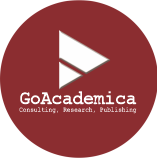ANALYSIS OF CALCULATION OF PRODUCTION COSTS AND DETERMINATION OF PRODUCT SELLING PRICES IN THE ABADI SENTOSA FURNITURE BUSINESS
DOI:
https://doi.org/10.15575/jim.v3i2.22326Keywords:
Production Cost, Full Costing Method, Product Sales.Abstract
In order to maximize revenue and profit, company management decides on manufacturing costs and selling prices during the production process. In order to determine the correct expenses, which are incurred during the production process and demonstrate the true cost of items, the manager of the production department must examine production costs. The variable costing method and the full costing method are two techniques used in cost accounting to determine manufacturing costs. In order for Abadi Sentosa to estimate the selling price of per-unit mebeul items, it is necessary to analyze how production expenses are calculated. The activities of this company, which manufactures cabinets, are carried out through a number of manufacturing procedures, allowing the production costs to be factored into the price of the product sold. The quantity of the production costs will be utilized to calculate the selling price of the goods. This study also examines if the cabinet product calculations, made using the current complete costing method, have complied with all requirements. Utilizing sales data for 8 units of 3-door ornamental cabinets with a cost of Rp. 2,202,700 and a unit selling price of Rp. 2,700,000, the results of establishing the cost of items manufactured using the company's full costing approach and the real full costing were compared. A 3-door decorative cabinet costs Rp 17,621,600 in total to produce, including Rp 8,000,00 for raw materials, Rp 5,120,000 for direct labor, Rp 4,304,080 for factory overhead, and Rp 175,920 for non-production costs. The profit was Rp 21,600,000 minus Rp 17,621,600, or Rp 3,978,400, assuming all 8 of the 3-door decorative cabinets—which cost Rp 2,700,000 each—were sold. Descriptive analysis is the analysis technique employed. These findings demonstrate that the corporation does not account for expenses such indirect labor costs, electricity prices, property taxes, and building depreciation in accordance with the full costing principle.
References
Badriyah, H. (2015). Buku Pintar Akuntansi Biaya Untuk Orang Awam. Jakarta: Penerbit HB.
Faisal, F. A. (2020). Analisis Biaya Produksi dalam Menentukan Harga Jual Produk Liquid Hero 57 Study Kasus pada CV. Cloud Heaven Makassar. (Fakultas Ekonomi dan Bisnis Universitas Muhammadiyah Makassar).
Kristiani, B. (2013). Kualitas Minuman Serbuk Effervescent Serai (Cymbopogon Nardus (L.) Rendle) dengan Variasi Konsentrasi Asam Sitrat dan NaBikarbonat. (Fakultas Teknobiologi Universitas Atma Jaya Yogyakarta).
Mulyadi. (2015). Akuntansi Biaya. Yogyakarta: STIM YKPN.
Purnama, D. (2019). Harga Pokok Produksi Dalam Menentukan Harga Jual Melalui Metode Cost Plus Pricing Dengan Pendekatan Full Costing. JRAK, 10(1), 119-132.
Surjadi, L. (2013). Akuntansi Biaya. Jakarta: Indeks.
Dewi, S. P., & Kristanto, S. B. (2013). Akuntansi Biaya. Jakarta: In Media.
Downloads
Published
How to Cite
Issue
Section
Citation Check
License

This work is licensed under a Creative Commons Attribution-ShareAlike 4.0 International License.













